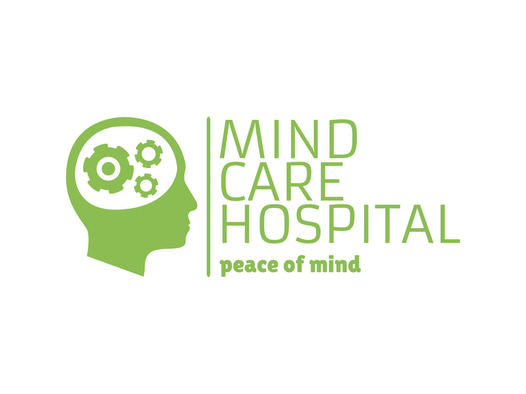
Understanding Generalized Anxiety Disorder
Understanding Generalized Anxiety Disorder: A Friendly and Witty Guide
Introduction
Imagine having a little worry monster that follows you around, whispering "what if?" in your ear all day, every day. That, in a nutshell, is what living with Generalized Anxiety Disorder (GAD) feels like. But don't worry! (Pun intended.) We're here to break down what GAD is, its symptoms, causes, and the various treatment options available. We'll keep things light-hearted and easy to understand, because learning about mental health shouldn't be a chore.
What is Generalized Anxiety Disorder?
Generalized Anxiety Disorder, or GAD for short, is a mental health condition characterized by excessive, uncontrollable worry about a variety of topics, such as work, health, social interactions, and everyday life circumstances. Unlike the occasional stress we all experience, GAD is persistent and pervasive, often lasting for months or even years. It’s like having a worry factory in your brain that never shuts down.
Symptoms of Generalized Anxiety Disorder
GAD isn't just about worrying a lot. It comes with a host of other symptoms that can affect both your mind and body. Let’s break them down:
Psychological Symptoms
1. Excessive Worrying: This is the hallmark of GAD. You worry about a range of things, and the worry is often disproportionate to the actual situation.
2. Restlessness: You feel on edge, as if you’re waiting for something bad to happen.
3. Difficulty Concentrating: Your mind is so busy with worry that focusing on tasks becomes a Herculean effort.
4. Irritability: Constant worry can make you more prone to snap at others or feel irritated by minor things.
5. Trouble Sleeping: You might have difficulty falling asleep, staying asleep, or experience restless, unsatisfying sleep.
Physical Symptoms
1. Fatigue: Worrying all the time is exhausting, leaving you feeling drained.
2. Muscle Tension: Your body might feel tight or sore due to constant tension.
3. Headaches: Frequent headaches can be a byproduct of constant stress.
4. Sweating: You may sweat excessively, even when you’re not exerting yourself physically.
5. Nausea or Upset Stomach: Anxiety can cause gastrointestinal issues, making your stomach feel like a washing machine on spin cycle.
What Causes Generalized Anxiety Disorder?
GAD doesn’t have a single cause; it’s more like a perfect storm of various factors. Let’s take a look at some of the main culprits:
Genetics
If anxiety runs in your family, you might be more likely to develop GAD. Thanks, genetics!
Brain Chemistry
Neurotransmitters, the brain's chemical messengers, play a role. An imbalance in these chemicals can affect mood regulation and contribute to anxiety.
Personality
Certain personality traits, such as being a perfectionist or having a tendency to overthink, can make you more prone to developing GAD.
Environmental Factors
Life experiences, particularly stressful or traumatic events, can trigger the onset of GAD. Chronic stress, such as financial worries or relationship problems, can also play a role.
Medical Conditions
Certain medical conditions, like thyroid problems or heart issues, can cause symptoms similar to those of GAD or worsen existing anxiety.
Diagnosing Generalized Anxiety Disorder
Diagnosing GAD involves a thorough evaluation by a mental health professional. Here’s what the process typically includes:
1. Medical History and Physical Exam: To rule out other conditions that might be causing your symptoms.
2. Psychiatric Evaluation: A mental health professional will ask about your symptoms, their duration, and how they affect your life.
3. Diagnostic Criteria: Your symptoms will be compared to criteria in the Diagnostic and Statistical Manual of Mental Disorders (DSM-5).
Treatment Options for Generalized Anxiety Disorder
The good news is, GAD is treatable! There are both pharmacological (medications) and non-pharmacological (therapy and lifestyle changes) options available. Let’s dive into these treatment options.
Pharmacological Treatments
1. Selective Serotonin Reuptake Inhibitors (SSRIs):
- These are commonly prescribed antidepressants that can help reduce anxiety symptoms by increasing levels of serotonin in the brain. Examples include fluoxetine (Prozac) and sertraline (Zoloft).
2. Serotonin-Norepinephrine Reuptake Inhibitors (SNRIs):
- Similar to SSRIs, SNRIs increase levels of serotonin and norepinephrine. Examples include venlafaxine (Effexor) and duloxetine (Cymbalta).
3. Benzodiazepines:
- These medications are effective for short-term relief of severe anxiety symptoms. However, they can be addictive and are typically not used long-term. Examples include diazepam (Valium) and lorazepam (Ativan).
4. Buspirone:
- This anti-anxiety medication is often used for long-term treatment of GAD. It’s less sedating than benzodiazepines and has a lower risk of dependency.
5. Beta-Blockers:
- These medications, such as propranolol (Inderal), are sometimes used to manage physical symptoms of anxiety, such as rapid heart rate and trembling.
Non-Pharmacological Treatments
1. Cognitive Behavioral Therapy (CBT):
- This is the gold standard for treating GAD. CBT helps you identify and change negative thought patterns and behaviors that contribute to anxiety. It’s like reprogramming your brain’s worry software.
2. Mindfulness-Based Stress Reduction (MBSR):
- MBSR involves mindfulness meditation and yoga to help reduce stress and anxiety. It’s about being present in the moment and not letting your mind run away with worries about the past or future.
3. Acceptance and Commitment Therapy (ACT):
- ACT helps you accept your anxiety rather than fight it, and commit to actions that align with your values. It’s about learning to live with your anxiety in a way that doesn’t control your life.
4. Lifestyle Changes:
- Regular exercise, a healthy diet, and adequate sleep can significantly reduce anxiety symptoms. It’s amazing what a brisk walk and a good night’s sleep can do for your mental health.
5. Relaxation Techniques:
- Techniques such as deep breathing, progressive muscle relaxation, and guided imagery can help calm your mind and body. Think of it as a spa day for your brain.
6. Support Groups:
- Connecting with others who understand what you’re going through can provide comfort and support. It’s like having a built-in cheering squad for your mental health journey.
Tips for Managing Generalized Anxiety Disorder
Living with GAD can be challenging, but with the right strategies, you can manage it effectively. Here are some tips:
1. Practice Self-Care:
- Make time for activities that bring you joy and relaxation. Whether it’s reading a book, taking a bubble bath, or gardening, self-care is essential.
2. Limit Caffeine and Alcohol:
- Both can exacerbate anxiety symptoms. Opt for herbal tea instead of that third cup of coffee.
3. Stay Connected:
- Maintain strong social connections with friends and family. Talking about your worries can often make them seem less daunting.
4. Set Realistic Goals:
- Break tasks into smaller, manageable steps. Celebrate your achievements, no matter how small.
5. Challenge Negative Thoughts:
- When you catch yourself thinking negatively, ask yourself if there’s evidence to support those thoughts. Often, our worries are based on assumptions rather than facts.
6. Learn to Say No:
- Don’t overload yourself with commitments. It’s okay to say no and prioritize your mental health.
7. Seek Professional Help:
- Don’t hesitate to reach out to a mental health professional if your anxiety feels unmanageable. Therapy and medication can make a big difference.
Supporting Someone with Generalized Anxiety Disorder
If you have a loved one with GAD, your support can make a huge difference. Here’s how you can help:
1. Educate Yourself:
- Learn about GAD so you can better understand what your loved one is experiencing.
2. Be Patient and Understanding:
- Anxiety can be frustrating, but your patience and empathy can provide great comfort.
3. Encourage Treatment:
- Gently encourage your loved one to seek professional help if they haven’t already.
4. Offer Practical Support:
- Help with everyday tasks and provide a listening ear.
5. Avoid Minimizing Their Feelings:
- Statements like “Just relax” or “Stop worrying” aren’t helpful. Instead, validate their feelings and offer support.
6. Practice Active Listening:
- Sometimes, just listening without offering solutions can be incredibly supportive.
Myths and Facts About Generalized Anxiety Disorder
Let’s bust some common myths about GAD:
1. Myth: GAD is just normal worrying.
- Fact: While everyone worries, GAD is characterized by excessive and uncontrollable worry that significantly impacts daily life.
2. Myth: People with GAD should just avoid stress.
- Fact: Stress is a part of life, and avoiding it entirely isn’t realistic. Learning to manage stress effectively is key.
3. Myth: GAD isn’t a real medical condition.
- Fact: GAD is a legitimate and recognized mental health disorder that requires appropriate treatment.
4. Myth: Medications for GAD are addictive.
- Fact: While some medications like benzodiazepines can be addictive if used long
-term, many other effective medications for GAD are not addictive.
5. Myth: Therapy doesn’t work for GAD.
- Fact: Therapy, especially CBT, is highly effective in treating GAD.
Final Thoughts
Generalized Anxiety Disorder can feel like an ever-present shadow, casting a pall over your life. But with the right understanding, treatment, and support, it’s possible to manage GAD and live a fulfilling life. Remember, you’re not alone, and there’s no shame in seeking help. So, keep your chin up, arm yourself with knowledge, and take each day as it comes. Life’s a journey, and with the right tools, you can navigate it with confidence and grace.
Anxiety Gallery
Explore images showcasing symptoms, causes, and management of generalized anxiety disorder.







Contact Us
Have questions about generalized anxiety disorder? Contact us for more information.
